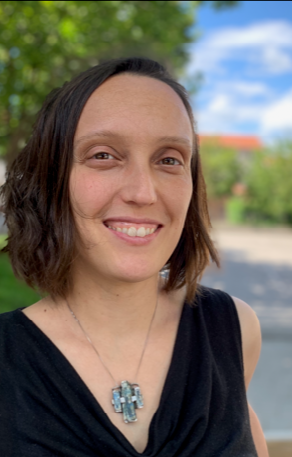Ana Akrap
Interview by Carey Sargent, EPFL, NCCR MARVEL, June 2020
The biggest challenge women scientists face is...
When I was a PhD student, I didn’t notice any difference between challenges facing men and women, but then as soon as you’re a little bit higher in your seniority you really notice it. I remember I went to a Christmas party at EPFL. There was a very nice ambiance, with between 50 to 100 people, but there was only one other woman there beside myself. And I thought, “Now I get it.”
It’s known that people sitting on committees tend to hire people who are like themselves. It’s an unconscious thing, but it’s a real thing, and it’s a barrier. It’s also known that this does not lead to better results. A more diverse workforce creates a more successful workforce, where more ideas are challenged and uncommon solutions found. A group with more women, creates a more successful group. A group with more women also makes science look better in society. It also motivates younger generations of women to consider it as a career.
No doubt, it’s hard for everyone. But it’s more difficult for women, especially when they start having a family. Yet there is no reason that women should be excluded. I think that women, in general, have characteristics that are very much desired. We want to be cooperative, we want to focus on exploring details, we don’t waste time, we’re careful, and we’re dedicated.

I chose a scientific career because…
I can’t remember ever not being curious…that’s something that I always was, maybe a bit too much. The first reported incident was when I was about two years old. My Mom thought I was with my Dad and my Dad thought I was with my Mom, but I was actually out in the hallway where I had found a box of onions and had peeled all of them, very systematically. Another important event was that when I was ten I got a microscope from my parents, and it was the best gift ever. It was just a cheap plastic microscope, nothing great, but they knew me well. So then I could peel the same onions and look for cells, or I could find the dirtiest water out there and look for microbes. It was really cool.
The other thing was that I had a love of numbers, always. I remember that when I was 11 I joined a math club after school. My math teacher was great. I don’t know if it’s because she was a woman, but very quickly that math club turned into only girls and some of my best friends were in there. It was the same group until the age of 14 and I think that is something that was very important for me. I never had these doubts about “Is this something that girls do?” For me, only girls did that! This peer support is also something that was important for me.
If I weren’t a scientist, I would be…
I enjoy languages, not just from the perspective of speaking them, but also the grammar and the etymology. I would maybe do something related to languages. Or possibly I would be an accountant. I think that would be fun, just working with numbers.
What I’m most looking forward to about working with MARVEL is…
I’m really looking forward to collaborating with people involved in MARVEL, and to what we can discover together. It seems very friendly, and I also appreciate this female initiative, to bring visibility to different aspects of working in science.
My top two papers….
One is my Physical Review Letters paper from 2016 on cadmium arsenide, Magneto-Optical Signature of Massless Kane Electrons in Cd3As2. Cadmium arsenide is one of these very old, but also very new compounds. People had looked into it a lot before, in the past, and then everything was forgotten. It has been resurrected in the last five years or so, though. What we did in that paper was basically to deconstruct the common wisdom. It was actually completely against the current. There’s one belief that there’s a band structure consisting of two Dirac cones, and we found that they’re really not playing any important role. Instead, there’s actually one large overlooked cone in this band structure, which is not topological, that can explain what people are seeing. For me it was also the start of my working with very high magnetic fields. It was my discovery of how great it feels to just put something in a very high magnetic field. Sort of like Andre Geim, who put a frog in the magnetic field, and it levitated. Looking at the question of how materials behave in high fields is something I’ve addressed ever since.
My second favorite paper would be the one that I’m working on right now with my group, which also involves high magnetic fields. It’s a special kind of material called a Weyl semi-metal, which we’ve put into high fields, and we’re trying to understand the intricacies of its band structure at very low energies. It’s amazingly rich, and this is also what makes it difficult to analyze, but it gives it this complexity which is wonderful. I feel like I’m solving a Sudoku, only it’s much harder and there’s not just one way to solve it.
